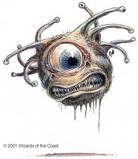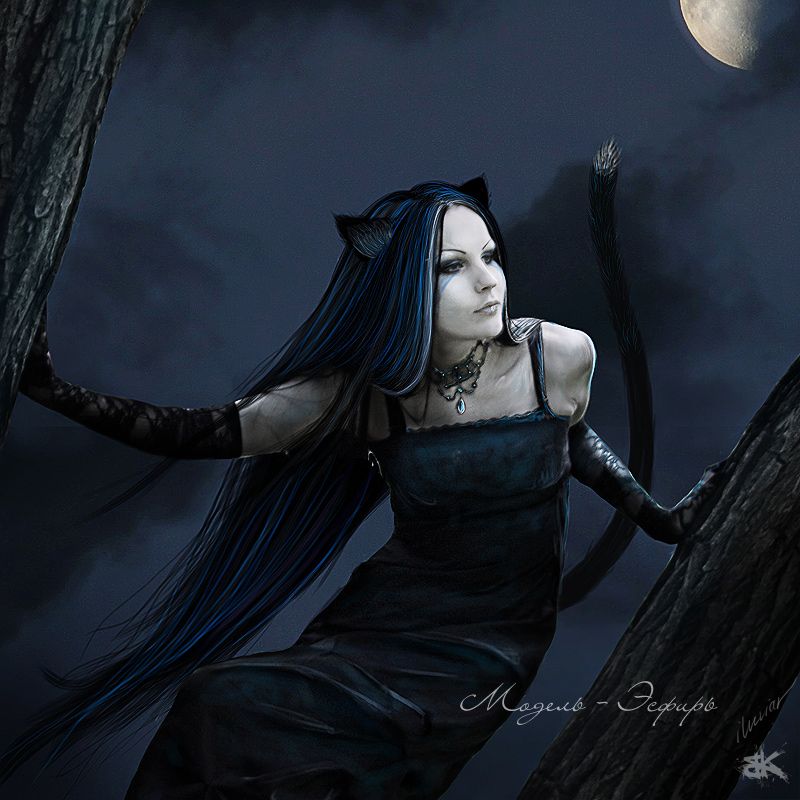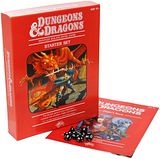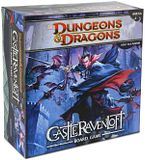Post by mathus on May 12, 2009 9:16:49 GMT -6
Now for part two of my rebuttal of opinions.
 Not killed, just dumbed-down to attract an audience with little interest in character interaction or development.
Not killed, just dumbed-down to attract an audience with little interest in character interaction or development.
...
Still, I feel like 2e's main sourcebooks had more roleplaying substance.
I just get a little dumbstruck at this statement. There was more role-playing substance in 2nd Edition? Really? Where are you seeing that?
In the Player's Handbook the closest they get is Chapter 5: Proficiencies. And none of those are social. There is no rules to Bluff someone, or Intimidate them, or use Diplomacy to butter them up.
Now some of the complete series will start fleshing out the social ruling but the original stuff?
Here is the extent of their social rules.
The rules of social or really any proficiency check in 2nd Edition is "DM must sometimes make up the rule to cover the situation" and they leave it at that.
If you are a new DM, or like many I have had over the years, a bad DM any rule outside of swinging a sword can be badly butchered. DMs are given no direction and really the rules they are given can be interpreted many different ways.
All 2nd Edition rules are written with the context of, "you DM will tell you what you can or can not do."
Here is the closest passage I could find to defining a social encounter in 2nd Edition.
Here is from the DMG:
The DMG tells you that good role-playing is a rare gift. And social interaction within the confines of 2nd Edition boils done to, can you convince your DM to allow you to talk/skill your way through an encounter. There are no rules written that a player can point to, to say it works this way. A hack and slash DM will be a hack and slash DM for many years until they mature enough to know that not every encounter is solved at the end of a sword.
I have been playing D&D for 20 years. I started at age 13 and am now 33. From age 13 until about 17 everything was hack and slash. Then at 17 I started playing Rifts and realized you could have a game with a robust fun skill system. Thankfully when I started playing with Niemz a few years later he was one of the few DMs that brought in a skill system. But Rules As Written (RAW) that is all optional and very watered down in 2nd Edition compared to most other games.
OK I will quit ranting on the 2nd Edition skill system, or lack thereof. (If you haven't noticed, 2nd Edition's lack of defined skills and social tools is MY biggest complaint about it.)
 The new alignment system is ridiculous. Law and chaos have been reduced to "extra good" or "extra evil". The alignment section begins with the phrase "If you choose an alignment".
The new alignment system is ridiculous. Law and chaos have been reduced to "extra good" or "extra evil". The alignment section begins with the phrase "If you choose an alignment".
WotC's argument for changing alignment? "We didn't like that in 3.5, having an alignment was more of a weakness. If you were Good, you took extra damage from Evil."
Gee, WotC, who wrote it that way?
Gary Gygax.
Alignment rules get sticky. These conversations are always of two camps.
Alignments define your character. If you break alignment bad things happen such as losing levels. (Niemz runs this way.) A good person can't use poison, paladins must be LG, everyone has an opinion on how True Neutral should be played.
The other camp say alignments suck. I live in a morally gray world. This camp argues that the punisher is Chaotic Good not Neutral Evil. What is the difference between the "honor" of using a sword and the pin prick of a poisoned shuriken? Dead is dead.
Beyond that I will say I am of the second camp. I would actually rather they didn't have alignment rules at all. (Star Wars and D20 Modern from Wizards do not have alignments at all in the rules.) Any further discussion on alignment will just be my view versus yours and I am not going to bang my head against a wall. We just don't see this the same way.
 The terminology is the complicated part. It's a totally needless obstruction.
The terminology is the complicated part. It's a totally needless obstruction.
Not sure what terminology you are referring to here. For the majority of major points things are still labeled the same. AC is AC, HP is HP.
 The structure of the game and its rules reminds me of Diablo II, WoW, and any of a number of MMORPGs (the very audience they're gunning for, most of whom they won't get due to the lack of graphics and pwnage).
The structure of the game and its rules reminds me of Diablo II, WoW, and any of a number of MMORPGs (the very audience they're gunning for, most of whom they won't get due to the lack of graphics and pwnage).
A friend asked me a question similar to this just yesterday as I was hanging up fliers for my upcoming Worldwide Game Day. He asked, "Has anyone tried to create an online D&D or is Warcraft already an online D&D?"
I told him there is an official licensed D&D Online that plays out very much like WoW. But there are two limitations that will never allow D&D to be played as a video game.
Number one you need to be able to completely interact with your environment. Until you have the ability to bash through any wall you will be railroaded by your environment.
The second is your choices given to you will always be limiting. Even like a game like Mass Effect where you have a dialog choice of 6 different answers and those answers can change your character from good to bad, you are still limited by six choices.
A true D&D game done in the world of computers would need to be able to pass a Turing Test. Hell it would almost need to be true AI to run a D&D game.
Now run that answer in reverse and I don't care how many aspects of videogames D&D may incorporate you will never have a complete mesh of videogame and D&D. There will always be a time and place to choose one over the other. D&D can not do everything a MMORPG can and MMORPGs are a long, long way from displacing D&D.
And some of the MMORPG aspects brought into 4th Edition are pretty cool. I am playing the new Shaman from Player's Handbook 2. He is a pet class. I have a spirit badger I summon and it fights for me while I direct its attacks safely on the other side of the battlefield. If the badger is killed I take half the damage it took to kill it.
 Christ, the game has an ending, now: at level 30, you fight the big boss and the campaign is over.
Christ, the game has an ending, now: at level 30, you fight the big boss and the campaign is over.
Yes and no. You can play past level 30 but basically you are a god at that point and only other god-like creatures have the power to affect you. But really, my 2nd Edition level 32 wild mage who lived on the astral plane so he could stop aging? He was creating an artifactal staff and had already created a few books of demi-god power when we ascended him to godhood. No different. (My books were like the Book of the Fool. Called the Book of Chaos, if you were a wild mage you automatically gained one wild mage level. If you were any other class you immediately switched classes to the wild mage class and started at level 1. It was a cursed book to the organized schools of magic who my wild mage hated.
Hell that character (also called Mathus which is where I got my screen name from since I played him for so many years) had a kender who worshiped him as a god for about 20 years game time before Mathus actually ascended.
If Mathus wasn't at an "end game" I don't know what else you would call it.
 Classes have been assigned roles so everyone knows how to make a balanced party. Solo adventures? Not a chance! That's like playing the game without an internet connection!
Classes have been assigned roles so everyone knows how to make a balanced party. Solo adventures? Not a chance! That's like playing the game without an internet connection!
The DM's job is shown as an exercise in simple math: how many levels of PCs? Here's how many levels of challenges to use against them! Is that trap considered a Warder, a Lurker, a Blaster, or an Obstacle? It's the way they tell you to run the game that really got me irked at 4e in the first place.
You are simplifying this way to much. It is not so much a simple addition problem but more a tool to measure party effectiveness versus encounter power. And the combination of monsters and players you can plug into this equation become astronomical very quickly.
And even 2nd Edition does this. They just do it very poorly. Ever since you needed to assign an XP value to a monster and you decided that there would be a "class" that does something better than anyone else, you now run into player versus monster calculations, and party balance issues.
In fact I believe there was a recent 2nd Edition question in the DM Help board on this site asking how do you balance out a Player vs. Monster adventure where there is either a single player or a team of player's that just walk through the whole adventure.
As for the solo/Internet comment. You can't play 2nd Edition solo unless you have a DM that writes a custom adventure for you. You can do the same thing if you want to do a custom adventure in 4th Edition. It is just a hell of a lot of work. In both Editions.
Oh and the needing an Internet connection to play comment, just let that argument go people. D&D is not and never will be a videogame. See my above response for reasons why. Continuing to push that response makes people who play 4th Edition just see you as a 2nd Edition fanboi and will immediately dismiss your opinion. It is comments like that, that make you look like an idiot. (P.S. If I truly thought you were an idiot I would not spend fours hours writing this rebuttal. And once again, these are all my opinions and interpretations feel free to disagree with me.)
 Further, the rules are far less important to me than the setting -- it's the reason I'm a Planescape fan. They changed the multiverse in 3.X, and I was pissed. The Astral and Ethereal are the high and low roads that get you anywhere. Elysium is just so good that it eats your soul.
Further, the rules are far less important to me than the setting -- it's the reason I'm a Planescape fan. They changed the multiverse in 3.X, and I was pissed. The Astral and Ethereal are the high and low roads that get you anywhere. Elysium is just so good that it eats your soul.
But at least the Great Ring was still there. Now, we have a gaping elemental toilet.
I'm interested in trying the 4e rules, but the setting is an enormous turnoff, along with the whole flavor of the game.
That will change year to year. This year is the release of my favorite campaign setting of Eberron. I am looking forward to those two books. Right now the only official setting released is Forgotten Realms. Even the default setting of the PH/DMG is not a real setting. They did re-use Greyhawk gods but that is as close as they got to rebooting that setting.
Now Wizards did take back their license for Dragonlance, Planescape, and I believe there were Ravenloft/Dark Sun rumors. For official stuff all I can say is I saw this on the release schedule.
www.wizards.com/default.asp?x=products/dndacc/242110000
www.amazon.com/Plane-Below-Secrets-Elemental-Supplement/dp/0786952490/ref=sr_1_1?ie=UTF8&s=books&qid=1242141317&sr=8-1

...
Still, I feel like 2e's main sourcebooks had more roleplaying substance.
I just get a little dumbstruck at this statement. There was more role-playing substance in 2nd Edition? Really? Where are you seeing that?
In the Player's Handbook the closest they get is Chapter 5: Proficiencies. And none of those are social. There is no rules to Bluff someone, or Intimidate them, or use Diplomacy to butter them up.
Now some of the complete series will start fleshing out the social ruling but the original stuff?
Here is the extent of their social rules.
Like the previous method ("Using What You Know"), this method has strengths and
weaknesses. Secondary skills do not provide any rules for determining whether a
character succeeds when he uses a skill to do something difficult. It is safe to assume that
simple jobs succeed automatically. (A hunter could find food for himself without any
difficulty.) For more complicated tasks, the DM must assign a chance for success. He can
assign a percentage chance, have the character make a saving throw, or require an Ability
check (see Glossary). The DM still has a lot of flexibility.
This flexibility means the DM must sometimes make up the rule to cover the situation,
however. As mentioned earlier, some DMs enjoy this; others do not, their strengths being
elsewhere. While secondary skills define and limit the player's options, they do not
greatly simplify the DM's job.
weaknesses. Secondary skills do not provide any rules for determining whether a
character succeeds when he uses a skill to do something difficult. It is safe to assume that
simple jobs succeed automatically. (A hunter could find food for himself without any
difficulty.) For more complicated tasks, the DM must assign a chance for success. He can
assign a percentage chance, have the character make a saving throw, or require an Ability
check (see Glossary). The DM still has a lot of flexibility.
This flexibility means the DM must sometimes make up the rule to cover the situation,
however. As mentioned earlier, some DMs enjoy this; others do not, their strengths being
elsewhere. While secondary skills define and limit the player's options, they do not
greatly simplify the DM's job.
The rules of social or really any proficiency check in 2nd Edition is "DM must sometimes make up the rule to cover the situation" and they leave it at that.
If you are a new DM, or like many I have had over the years, a bad DM any rule outside of swinging a sword can be badly butchered. DMs are given no direction and really the rules they are given can be interpreted many different ways.
All 2nd Edition rules are written with the context of, "you DM will tell you what you can or can not do."
Here is the closest passage I could find to defining a social encounter in 2nd Edition.
Talk: Your character doesn't run from encounters all the time, and attacking
everything you meet eventually leads to problems. Sometimes the best thing to do is talk,
whether it's casual conversation, hardball negotiation, jovial rumor-swapping, or
intimidating threats. In fact, talking is often better than fighting. To solve the problems
your DM has created for your character, you need information. Asking the right
questions, developing contacts, and putting out the word are all useful ways to use an
encounter. Not everything you meet, human or otherwise, is out to kill your character.
Help often appears in the most surprising forms. Thus it often pays to take the time to talk
to creatures.
everything you meet eventually leads to problems. Sometimes the best thing to do is talk,
whether it's casual conversation, hardball negotiation, jovial rumor-swapping, or
intimidating threats. In fact, talking is often better than fighting. To solve the problems
your DM has created for your character, you need information. Asking the right
questions, developing contacts, and putting out the word are all useful ways to use an
encounter. Not everything you meet, human or otherwise, is out to kill your character.
Help often appears in the most surprising forms. Thus it often pays to take the time to talk
to creatures.
Here is from the DMG:
Personality
More than what they can do, how much they cost, or how loyal they are, NPCs live
only when they have personalities. Poorly played, an NPC can easily be reduced to
nothing more than a collection of numbers, spells, equipment, and automatic reactions—a
role-playing automaton. Vivid NPCs are much more than this. These characters,
developed and acted by the DM, are complete. They have quirks, likes, dislikes, habits,
ambitions, and desires. In one way or another they fire and remain in the imagination of
the players
Some DMs have the naturally ability to create such characters on the spur of the
moment, improvising as they go along. This is a rare gift, not possessed by most.
However, this doesn't mean any DM can't create good NPCs. All that's required is a little
effort.
More than what they can do, how much they cost, or how loyal they are, NPCs live
only when they have personalities. Poorly played, an NPC can easily be reduced to
nothing more than a collection of numbers, spells, equipment, and automatic reactions—a
role-playing automaton. Vivid NPCs are much more than this. These characters,
developed and acted by the DM, are complete. They have quirks, likes, dislikes, habits,
ambitions, and desires. In one way or another they fire and remain in the imagination of
the players
Some DMs have the naturally ability to create such characters on the spur of the
moment, improvising as they go along. This is a rare gift, not possessed by most.
However, this doesn't mean any DM can't create good NPCs. All that's required is a little
effort.
The DMG tells you that good role-playing is a rare gift. And social interaction within the confines of 2nd Edition boils done to, can you convince your DM to allow you to talk/skill your way through an encounter. There are no rules written that a player can point to, to say it works this way. A hack and slash DM will be a hack and slash DM for many years until they mature enough to know that not every encounter is solved at the end of a sword.
I have been playing D&D for 20 years. I started at age 13 and am now 33. From age 13 until about 17 everything was hack and slash. Then at 17 I started playing Rifts and realized you could have a game with a robust fun skill system. Thankfully when I started playing with Niemz a few years later he was one of the few DMs that brought in a skill system. But Rules As Written (RAW) that is all optional and very watered down in 2nd Edition compared to most other games.
OK I will quit ranting on the 2nd Edition skill system, or lack thereof. (If you haven't noticed, 2nd Edition's lack of defined skills and social tools is MY biggest complaint about it.)

WotC's argument for changing alignment? "We didn't like that in 3.5, having an alignment was more of a weakness. If you were Good, you took extra damage from Evil."
Gee, WotC, who wrote it that way?
Gary Gygax.
Alignment rules get sticky. These conversations are always of two camps.
Alignments define your character. If you break alignment bad things happen such as losing levels. (Niemz runs this way.) A good person can't use poison, paladins must be LG, everyone has an opinion on how True Neutral should be played.
The other camp say alignments suck. I live in a morally gray world. This camp argues that the punisher is Chaotic Good not Neutral Evil. What is the difference between the "honor" of using a sword and the pin prick of a poisoned shuriken? Dead is dead.
Beyond that I will say I am of the second camp. I would actually rather they didn't have alignment rules at all. (Star Wars and D20 Modern from Wizards do not have alignments at all in the rules.) Any further discussion on alignment will just be my view versus yours and I am not going to bang my head against a wall. We just don't see this the same way.

Not sure what terminology you are referring to here. For the majority of major points things are still labeled the same. AC is AC, HP is HP.

A friend asked me a question similar to this just yesterday as I was hanging up fliers for my upcoming Worldwide Game Day. He asked, "Has anyone tried to create an online D&D or is Warcraft already an online D&D?"
I told him there is an official licensed D&D Online that plays out very much like WoW. But there are two limitations that will never allow D&D to be played as a video game.
Number one you need to be able to completely interact with your environment. Until you have the ability to bash through any wall you will be railroaded by your environment.
The second is your choices given to you will always be limiting. Even like a game like Mass Effect where you have a dialog choice of 6 different answers and those answers can change your character from good to bad, you are still limited by six choices.
A true D&D game done in the world of computers would need to be able to pass a Turing Test. Hell it would almost need to be true AI to run a D&D game.
Now run that answer in reverse and I don't care how many aspects of videogames D&D may incorporate you will never have a complete mesh of videogame and D&D. There will always be a time and place to choose one over the other. D&D can not do everything a MMORPG can and MMORPGs are a long, long way from displacing D&D.
And some of the MMORPG aspects brought into 4th Edition are pretty cool. I am playing the new Shaman from Player's Handbook 2. He is a pet class. I have a spirit badger I summon and it fights for me while I direct its attacks safely on the other side of the battlefield. If the badger is killed I take half the damage it took to kill it.

Yes and no. You can play past level 30 but basically you are a god at that point and only other god-like creatures have the power to affect you. But really, my 2nd Edition level 32 wild mage who lived on the astral plane so he could stop aging? He was creating an artifactal staff and had already created a few books of demi-god power when we ascended him to godhood. No different. (My books were like the Book of the Fool. Called the Book of Chaos, if you were a wild mage you automatically gained one wild mage level. If you were any other class you immediately switched classes to the wild mage class and started at level 1. It was a cursed book to the organized schools of magic who my wild mage hated.
Hell that character (also called Mathus which is where I got my screen name from since I played him for so many years) had a kender who worshiped him as a god for about 20 years game time before Mathus actually ascended.
If Mathus wasn't at an "end game" I don't know what else you would call it.

The DM's job is shown as an exercise in simple math: how many levels of PCs? Here's how many levels of challenges to use against them! Is that trap considered a Warder, a Lurker, a Blaster, or an Obstacle? It's the way they tell you to run the game that really got me irked at 4e in the first place.
You are simplifying this way to much. It is not so much a simple addition problem but more a tool to measure party effectiveness versus encounter power. And the combination of monsters and players you can plug into this equation become astronomical very quickly.
And even 2nd Edition does this. They just do it very poorly. Ever since you needed to assign an XP value to a monster and you decided that there would be a "class" that does something better than anyone else, you now run into player versus monster calculations, and party balance issues.
In fact I believe there was a recent 2nd Edition question in the DM Help board on this site asking how do you balance out a Player vs. Monster adventure where there is either a single player or a team of player's that just walk through the whole adventure.
As for the solo/Internet comment. You can't play 2nd Edition solo unless you have a DM that writes a custom adventure for you. You can do the same thing if you want to do a custom adventure in 4th Edition. It is just a hell of a lot of work. In both Editions.
Oh and the needing an Internet connection to play comment, just let that argument go people. D&D is not and never will be a videogame. See my above response for reasons why. Continuing to push that response makes people who play 4th Edition just see you as a 2nd Edition fanboi and will immediately dismiss your opinion. It is comments like that, that make you look like an idiot. (P.S. If I truly thought you were an idiot I would not spend fours hours writing this rebuttal. And once again, these are all my opinions and interpretations feel free to disagree with me.)

But at least the Great Ring was still there. Now, we have a gaping elemental toilet.
I'm interested in trying the 4e rules, but the setting is an enormous turnoff, along with the whole flavor of the game.
That will change year to year. This year is the release of my favorite campaign setting of Eberron. I am looking forward to those two books. Right now the only official setting released is Forgotten Realms. Even the default setting of the PH/DMG is not a real setting. They did re-use Greyhawk gods but that is as close as they got to rebooting that setting.
Now Wizards did take back their license for Dragonlance, Planescape, and I believe there were Ravenloft/Dark Sun rumors. For official stuff all I can say is I saw this on the release schedule.
www.wizards.com/default.asp?x=products/dndacc/242110000
www.amazon.com/Plane-Below-Secrets-Elemental-Supplement/dp/0786952490/ref=sr_1_1?ie=UTF8&s=books&qid=1242141317&sr=8-1
Product Description
Fiendish dungeons and elemental battlefields await...
A hotbed of adventure opportunities await you in the roiling maelstrom of the Elemental Chaos–a plane of titans, elementals, genies, slaads, and demons. This game supplement builds on the overview of the Elemental Chaos presented in the Manual of the Planes™ game supplement and explores the tumultuous plane is greater detail. From the City of Brass to the githzerai monastery of Zerthadlun to the spiraling depths of the Abyss, adventure lurks behind every lava waterfall, across every icy battlefield, and beyond every raging lightning storm.
This game supplement describes the Elemental Chaos in detail, featuring key locations throughout the plane. It also presents a multitude of new monsters, mighty primordials, and powerful demons, as well as adventure hooks, encounters, hazards, and everything Dungeon Masters need to make the Elemental Chaos a featured setting in their campaigns.
Fiendish dungeons and elemental battlefields await...
A hotbed of adventure opportunities await you in the roiling maelstrom of the Elemental Chaos–a plane of titans, elementals, genies, slaads, and demons. This game supplement builds on the overview of the Elemental Chaos presented in the Manual of the Planes™ game supplement and explores the tumultuous plane is greater detail. From the City of Brass to the githzerai monastery of Zerthadlun to the spiraling depths of the Abyss, adventure lurks behind every lava waterfall, across every icy battlefield, and beyond every raging lightning storm.
This game supplement describes the Elemental Chaos in detail, featuring key locations throughout the plane. It also presents a multitude of new monsters, mighty primordials, and powerful demons, as well as adventure hooks, encounters, hazards, and everything Dungeon Masters need to make the Elemental Chaos a featured setting in their campaigns.









 I'm proud of the fact that my local LARP has had only two combats in two years.
I'm proud of the fact that my local LARP has had only two combats in two years.



 ! You can vote once per day.
! You can vote once per day.  If we can get to #1, I will give 1,000,000 gold


